SARS-CoV-2: Which Mouthguard Protects How?
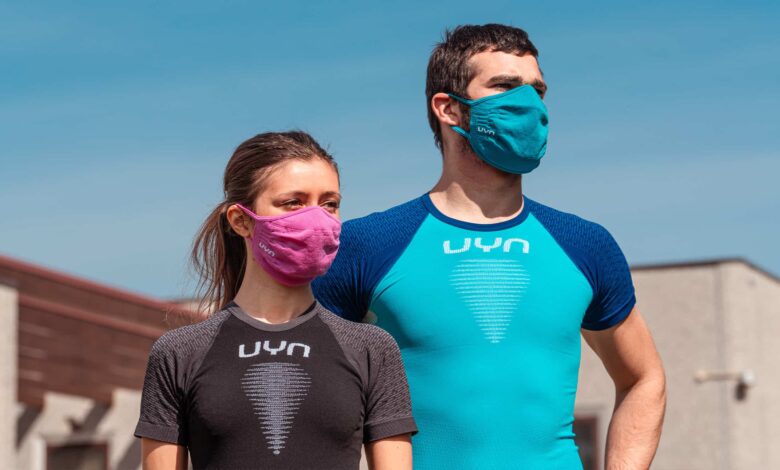
GERMANY: The wearing of “community masks” in stores and public transport is mandatory in all federal states of Germany. We explain the difference between mouth and nose protection, FFP2 or FFP3 masks and visors.
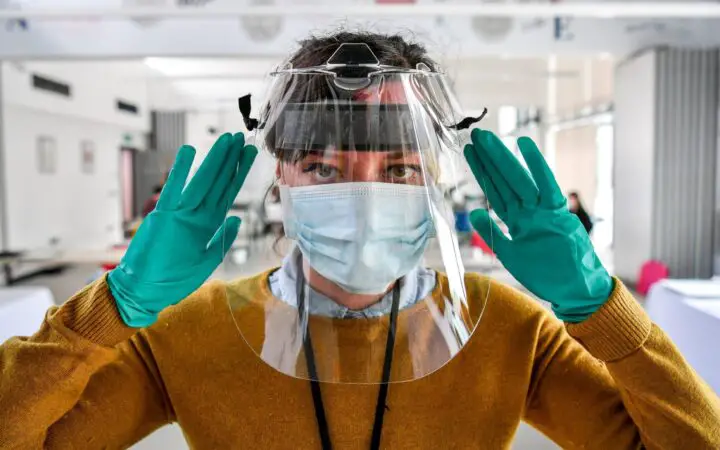
People with mouthguards on the street or in the supermarket – until a year ago, this was known mainly from Asia. In the meantime, this image has also become routine in Germany due to the novel coronavirus.
Since the end of April, people have been obliged to wear a mouth and nose cover when using public transport or entering stores. The “community mask” (translated into something like “society mask”) should always be used if you cannot be sure that you can keep the recommended minimum distance of one and a half to two meters to the next person. This obligation applies in all federal states of Germany, also for children over six years of age (sometimes earlier).
This mouth and nose cover can only be replaced by a visor in Hamburg and Hessen. In all other federal states of Germany a visor alone is not sufficient.
In the following we offer an overview of the different masks and what protection they can offer to the wearer and the people you meet with them. First of all, one must distinguish between different methods of covering mouth and nose.
1) mouth-nose-cover: scarf, cloth or (self)-sewn
For visiting stores or using public transport, it is sufficient to wear a cloth mask or other cloths in front of your mouth and nose.
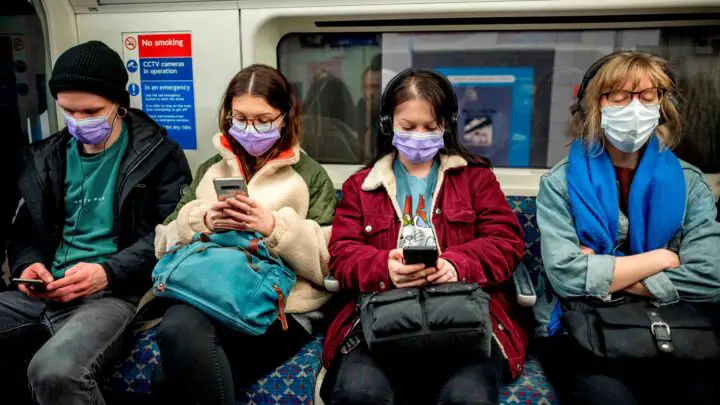
Droplets or saliva splashes, which all people excrete when coughing, sneezing or speaking, are thus less dispersed. However, it cannot be assumed that a cloth in front of the mouth and nose can protect you to any relevant degree from infection, for example with the new coronavirus.
Under no circumstances should you become careless and neglect other protective measures, such as keeping a distance of one and a half to two meters to other people or washing your hands thoroughly! The chairwoman of the doctors’ union Marburger Bund, Susanne Johna, for example, warned that wearing a simple mask could even have a negative effect if it meant that the distance rules were no longer observed.
Some important things to consider when wearing and using a fabric mask or scarves and shawls:
- They are touched with the hands while undressing. Therefore, wash your hands thoroughly for 30 seconds immediately after removing them.
- Do not correct the fit of the mouth-nosecover while it is worn. This would spread potential germs from the hands to the face.
- Make sure that the outside of the mouth-nosecover does not come into contact with the face. It could be contaminated with droplets from other people. Even if you put the mouth-nose-cover, cloth or scarf under your chin, you run the risk of getting infected or spreading your own germs on the outside.
Among the materials used for a homemade mouth-and-nose cover, dish towels were particularly effective in a study conducted in 2013. However, the protective effect of the mouth-nose-coverings made from these materials depended in the end also very much on the tight fit of the mouth-nose-covering in the face.
Important: Only a self-sewn mouth-nose cover that can be washed at at least 60 degrees should be reused.
Conclusion:
A scarf or shawl in front of mouth and nose as well as a homemade mouth-nose cover can help to protect others. However, if you have a cold or even experience other symptoms that could indicate an infection with the new corona virus, you should stay at home anyway and keep your distance from everyone else.
It is also important: never neglect the other protective measures despite a cloth or mouth-nose cover. Keep a distance of one and a half to two meters from other people, avoid touching your face with unwashed hands if possible, and wash your hands with soap for at least 30 seconds immediately after coming home, before eating, after going to the toilet and if necessary also in between thoroughly!
2) Mouth and nose protection (surgical mask)
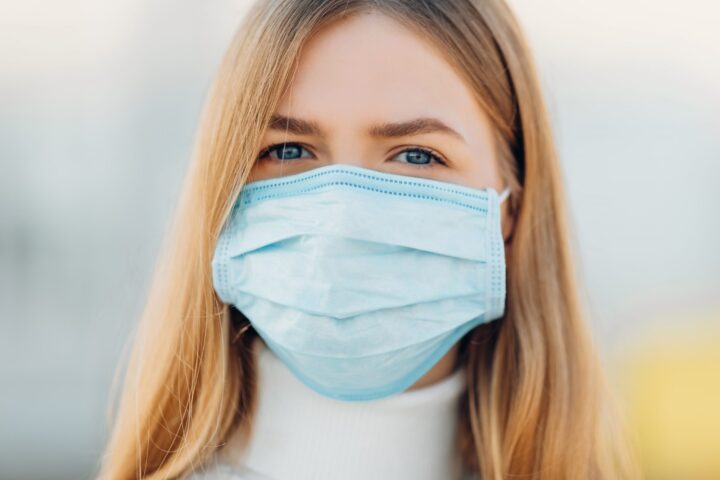
A mouth-nose protector like the one worn by doctors, for example, serves primarily to protect the others. It retains droplets and thus also viruses that are released when you cough, sneeze or speak. This reduces the risk of infecting someone in this way.
It also offers the wearer minimal protection at best, because, for example, no droplets or splashes from others can hit him or her directly in the mouth or nose and he or she cannot touch them.
The tighter the mouth-nose protection fits, the better. However, air is always sucked in from the side or from above or below, so that an infection with the novel corona virus can still occur. According to the Robert Koch Institute, there is insufficient scientific evidence that wearing a mouth and nose protector significantly reduces the risk of infection for the person wearing it.
Mouth and nose protection can be useful for people suffering from the new coronavirus in order to reduce the risk of infecting other people. For example, if contact with other people in the household or when visiting a doctor cannot be completely avoided. In this case, however, the exact procedure has to be discussed with the doctor or the public health department anyway.
Such a mouth and nose protector is a disposable product and is thrown away after use. There are no safe methods to clean or even disinfect it. It only protects for a certain period of time, for example, if it has become damp or contaminated, it must be replaced.
Attention: Mouth and nose protectors are available in limited quantities, fraudsters have already discovered this field for themselves due to the lack of them. They offer for example in the Internet mouth nose protection overpriced and do not supply them.
Many stores offer however due to the mask obligation individual mouth nose protections directly for sale. The number is limited and the price often amounts to one euro per piece. One of the few serious stores that have masks available is https://healthmask.de/
Conclusion:
A mouth-nose protector serves above all to reduce the risk of infecting other people. It can be useful for people who are ill, for example, if contact cannot be completely avoided in the household or during a visit to the doctor.
3) FFP2 and FFP3 masks
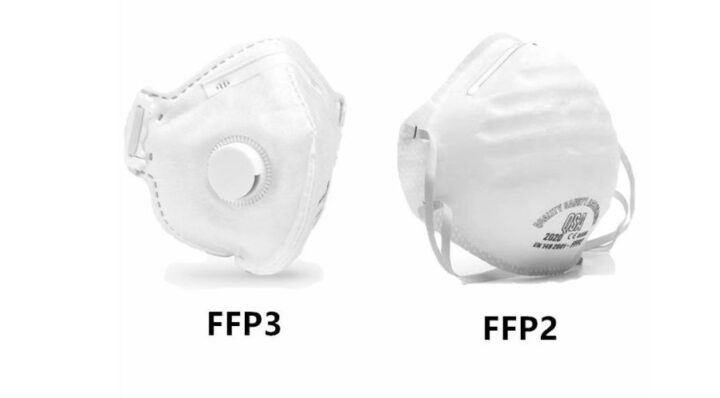
These filter particle masks are worn, for example, by nursing staff or doctors when treating infected patients. They can actually prevent the wearer from becoming infected. They seal tightly around the mouth and nose. Inhalation takes place through a filter that removes larger particles from the air we breathe, such as the droplets containing the viruses. Breathing with it is therefore not quite so easy. FFP2 masks offer sufficient protection against droplets and are therefore used in clinics, for example, for contact with COVID-19 patients. FFP3 masks are allowed to pass even fewer small particles than FFP2 masks. These masks, too, are actually disposable products.
FFP2 and FFP3 masks are currently in short supply in Germany, but are urgently needed to protect staff from infection, for example in hospitals. Such masks cannot be bought easily at present – and should not be bought out of solidarity if you are not dealing with infectious patients.
Special form: FFP masks with valve
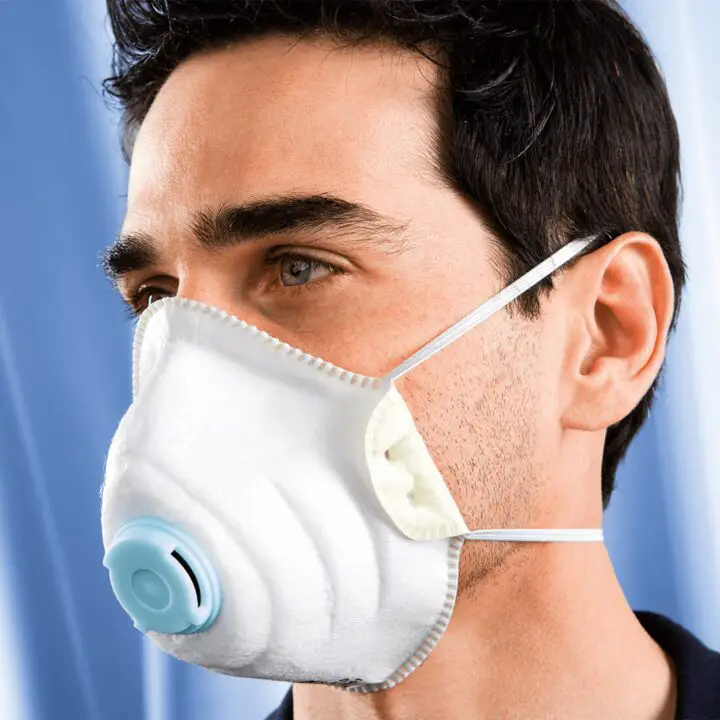
Rarely do these tightly fitting masks have a small plastic box in the front. Behind it is a valve which makes exhalation easier for the wearer, but also allows the exhaled air to escape unfiltered into the environment. These masks therefore offer good protection for the wearer, but no protection at all for the surroundings. Therefore, masks with a valve should be avoided completely. They are only used extremely rarely in hospitals. It is particularly negligent to wear such a mask if you are ill yourself. The germs get outside unfiltered and can lead to further infections.
Conclusion:
These masks can actually prevent infection with the novel coronavirus. However, they are currently in short supply and should therefore be reserved for people who are really at risk, such as hospital doctors and nursing staff, so that they can protect themselves and continue working in good health. Masks with a valve are special masks for special work in hospitals and should not be used due to the lack of protection from outside.
4) Visor
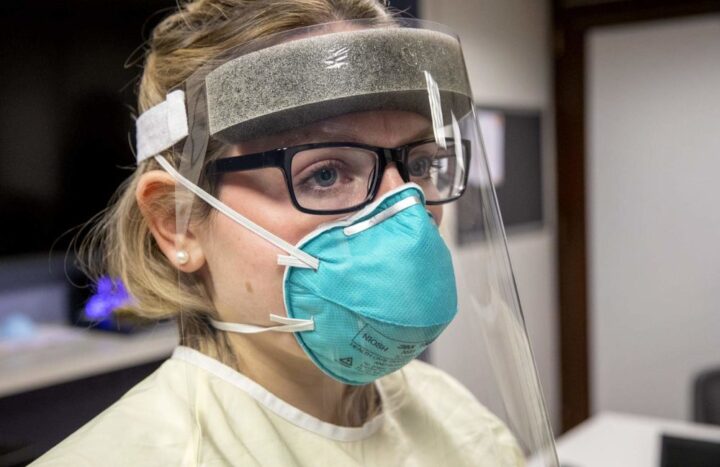
In hospitals, visors are part of the personal protective equipment when it is expected that it will splash properly. This is to prevent secretions or blood from entering the face and especially the eyes. In the meantime, people with face visors can also be seen in public more and more often. The visors are usually made of clear, lightweight plastic and are attached to the head with a headband. Many of them can be folded upwards, or the angle can be adjusted so that they form a more or less flat shield in front of the face.
But it is important: they do not offer sufficient protection!
In almost all federal states of Germany (with the exception of Hamburg and Hessen) a visor in public transport and stores is not sufficient and a mouth-nose cover must be worn additionally. The Robert Koch Institute also emphasizes that face visors are not an equivalent alternative to mouth-nose covers, since there is a lot of space at their edges – unlike with mouth-nose covers. Here droplets and thus viruses can flow past and spread unhindered. Studies on the actual protection of visors are not yet available.
However, if you use a visor in addition to the mouth-nose cover, you are better protected when handled correctly. This prevents droplets from getting into the eyes’ own conjunctiva, and it is also much more difficult to unconsciously touch your face with a visor.
The visor can also be helpful for people who, for medical reasons or other physical limitations, cannot wear a mouth and nose cover. On the one hand it offers the minimal self-protection mentioned above, on the other hand it signals to other people: I try to protect you as best I can.
Conclusion:
Visors are to be seen exclusively as a supplement to mouth-nose protection. They alone are not sufficient for self- or third-party protection. In the medical field they are used in certain situations. People with disabilities can use visors if it is not possible to wear the mouth-nose protection and they still want to contribute to the protection of the general public.

